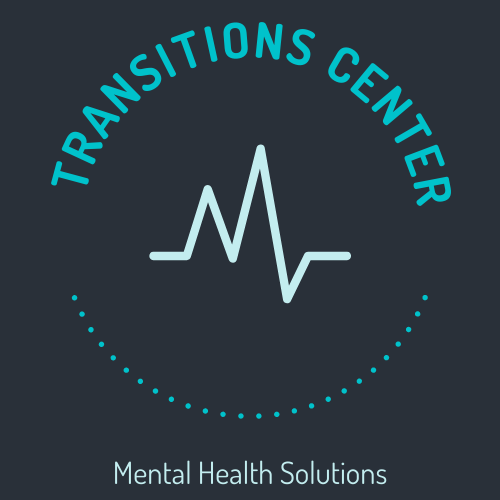Mental illnesses are often stigmatized and misunderstood by the public. But what are the seven most common mental illnesses? This blog post will outline each of them, as well as their symptoms and causes. By understanding these seven mental illnesses, we can work to break the stigma around them and provide support for those who suffer from them.
The Seven Most Common Mental Illnesses
1. Unipolar Depression
Unipolar depression is perhaps the most common mental illness. According to the National Institute of Mental Health , about 16 million adults in the U.S. had at least one major depressive episode in 2012, representing 6.9 percent of all U.S. adults . These episodes are characterized by having five or more depressive symptoms per week for at least two weeks, such as sadness, irritability, and a lack of interest in previously enjoyable activities. Unipolar depressions also often result in sleep disturbances and loss of energy. The exact cause is currently unknown, but genetic factors are thought to be most important.
2. Schizophrenia
Schizophrenia is a chronic and severe mental illness that affects about 1% of adults in the U.S., according to the National Institute of Mental Health . Schizophrenia causes a range of symptoms, including hallucinations, delusions, problems with “form” (the way one thinks), movement from place to place, emotional flatness or inappropriate emotional responses, and speaking little to others. Schizophrenia is also characterized by a lack of motivation, as well as problems with attention and judgment. Individuals usually first show symptoms in their early 20s.
The exact cause of schizophrenia is unknown, but both genetic and environmental factors are thought to play a role . Researchers have found links between certain gene variations and increased risk of schizophrenia.
3. Bipolar Disorder
Bipolar disorder is another type of mental illness that, like unipolar depression, usually involves mood changes. The primary difference between the two is that bipolar disorder also typically includes periods of abnormally elevated energy/activity (known as “mania”). As with Schizophrenia, bipolar disorder most often first occurs in a person’s early 20s.
The exact cause of bipolar disorder is unknown, but genetic factors are thought to play a large role . Studies have found that if a parent has bipolar disorder, there is a 50% chance that their child will too.
4. Post Traumatic Stress Disorder (PTSD)
PTSD involves symptoms such as flashbacks and nightmares of a traumatic event, as well as symptoms of hyperarousal (like staying alert to danger). PTSD can develop after exposure to traumatic experiences such as violence or disaster. A study published in the New England Journal of Medicine estimated that about 9% of Americans will suffer from PTSD at some point in their lives .
The exact cause of PTSD is unknown, but both genetic and environmental factors are thought to play some role . There is evidence that certain variations in the FKBP5 gene can increase risk for PTSD.
5. Obsessive-Compulsive Disorder (OCD)
Individuals with OCD experience uncontrollable recurring thoughts (called “obsessions”) and uncontrollable urges to repeat certain behaviors (called “compulsions”). Common obsessions include an excessive concern with orderliness, cleanliness, or violence; and common compulsions include excessive washing, checking things (e.g., locks), and counting. About 2% of people in the U.S. will experience OCD at some point in their lives.
The exact cause of OCD is unknown, but both genetic and environmental factors are thought to play some role . Like PTSD, there are indications that certain variations in the FKBP5 gene can increase risk for OCD.
6. Generalized Anxiety Disorder (GAD)
GAD produces symptoms such as excessive worry about everyday things, restlessness, difficulty concentrating, irritability, and muscle tension. According to the Anxiety and Depression Association of America , 5% of adults in the U.S are diagnosed with GAD each year .
GAD often develops from both genetic and environmental factors . Studies have found that if a parent has GAD, there is a 50% chance that their child will too.7. Social Anxiety Disorder
7. Social anxiety
This disorder causes intense fear of being judged by others, as well as a desire to avoid social situations. As many as 13% of American adults have social anxiety disorder at some point in their lives , and it is more common among women than men.
While the exact cause of social anxiety disorder is unknown, there are indications that it can be inherited . Studies have found that having an affected parent increases a child’s risk for social anxiety disorder.
8. Attention Deficit Hyperactivity Disorder (ADHD)
Individuals with ADHD experience symptoms such as difficulty focusing and paying attention, impulsiveness, and hyperactivity. According to the Centers for Disease Control and Prevention (CDC), about 6.4 million children (or 11% of American children) between the ages of 4 and 17 have been diagnosed with ADHD at some point in their lives .
The exact cause of ADHD is unknown, but genetic factors are thought to play a role . There are early indications that certain variations in the SNAP25 gene can increase the chance a person will develop ADHD.
9. Schizophrenia
Schizophrenia is characterized by delusions, hallucinations, and disorganized thinking and behaviors. These symptoms commonly appear in early adulthood, typically between the ages of 16 to 30 years old. About 1% of people in the U.S experience schizophrenia at some point in their lives.
While the exact cause of schizophrenia is unknown, both genetic and environmental factors are thought to play a role . A study published in the American Journal of Human Genetics found that individuals with a first-degree relative (such as a sibling or parent) with schizophrenia were more likely to experience schizophrenia themselves.
10: Postpartum Depression
Postpartum depression is a condition that affects about 10 to 15% of women in the U.S., typically within three months after having a child . On average, it occurs later than other postnatal illnesses (typically around 4 to 6 weeks after giving birth), but can also occur up to a year later. Symptoms usually include sadness, anxiety, and irritability. According to the Journal of Women’s Health , about 5% to 10% of women who experience postpartum depression will develop thoughts of suicide.
The exact cause of postpartum depression is unknown, but risk factors include both genetic and environmental factors . Studies have indicated that if a woman’s mother or sister (but not her father or brother) experienced postpartum depression, she is at a greater risk for developing it during and after pregnancy.
All of these conditions can cause both emotional and physical symptoms that affect everything from work to relationships to daily life activities . Treating these conditions can vary from using therapy to taking medication.
About the Authors
Transitions Center for Natural Mental Health Treatments for a variety of physical and mental dependency issues and conditions. Substance use disorders are difficult to understand for many people. The physical and mental aspects of any substance disorder are complicated and unique to the individual suffering. The differences between physical and psychological dependency vary but have some similarities. Transitions Center for Natural Mental Health Treatments help the public know what to look for as a means of helping a loved one cope with the challenges of mental health disorders.
We know you have more questions and with Mary Jane’s CBD Dispensary’s help we are able to provide the best information on this topic. MJCBD is the cbd oil online in Texas. Mary Jane’s CBD Dispensary is a home to America’s favorite and most talked about natural remedy, cannabinol. Mary Jane’s offers customers with top-notch quality made CBD Hemp products as an alternative to harmful pharmaceutical drugs. Their team is extremely passionate about the cannabis movement as a whole which includes making CBD accessible to all that seek it. Get in touch today by visiting their website!

